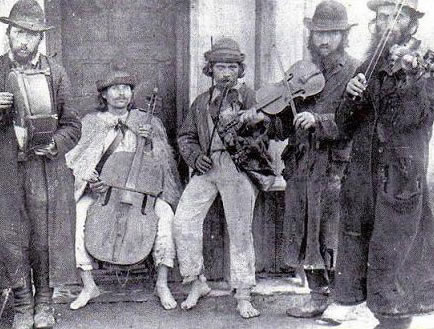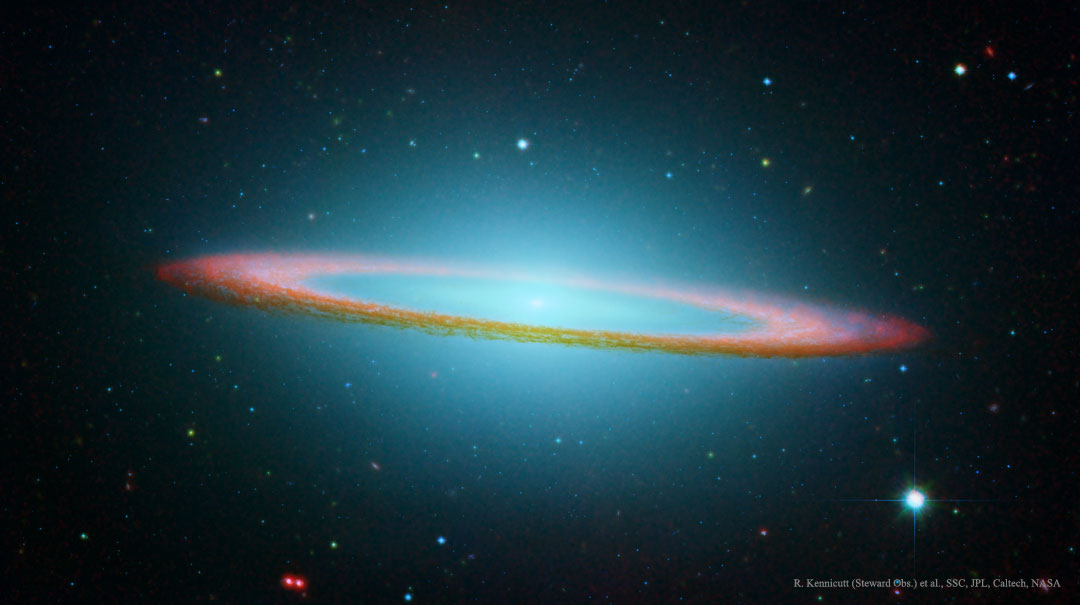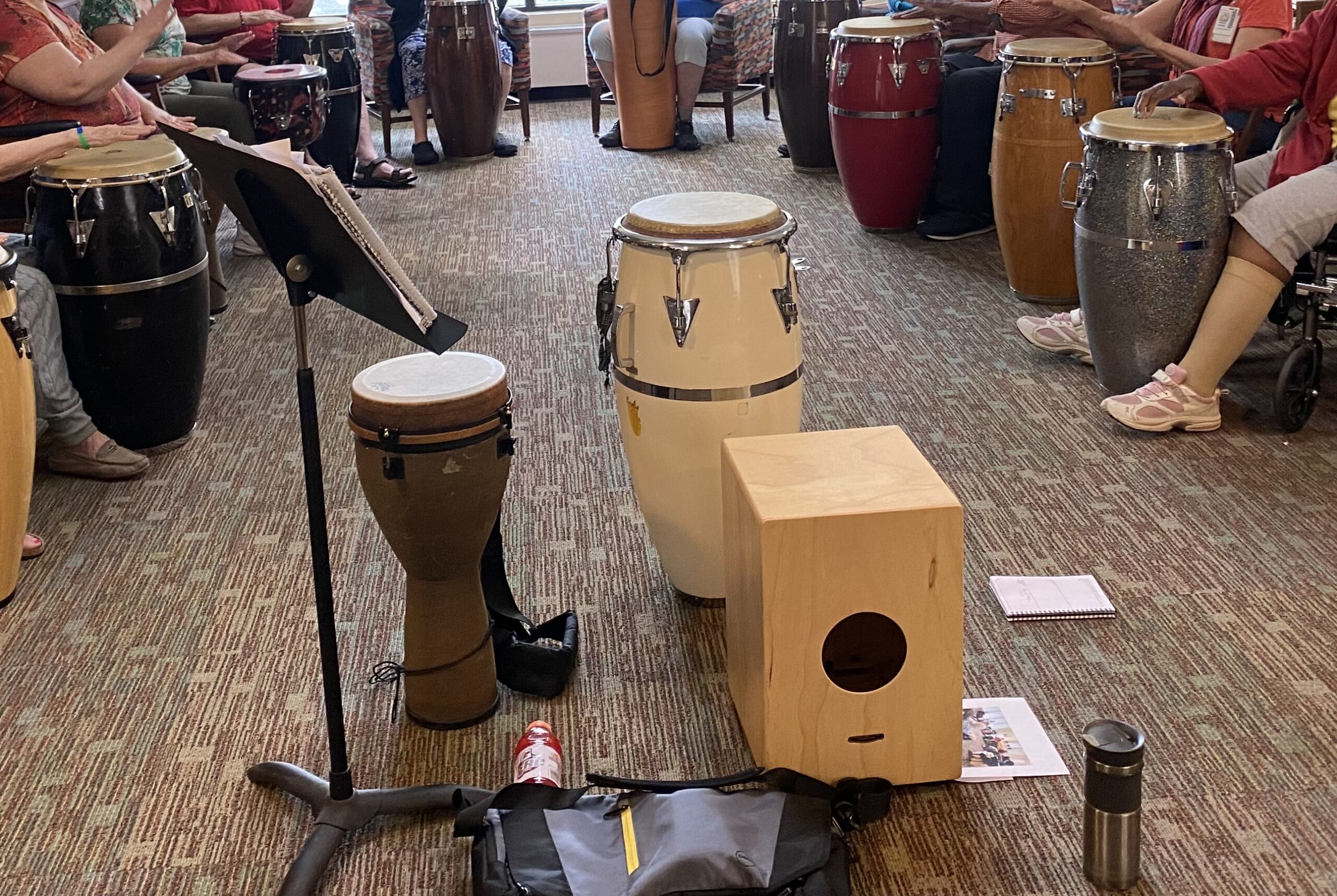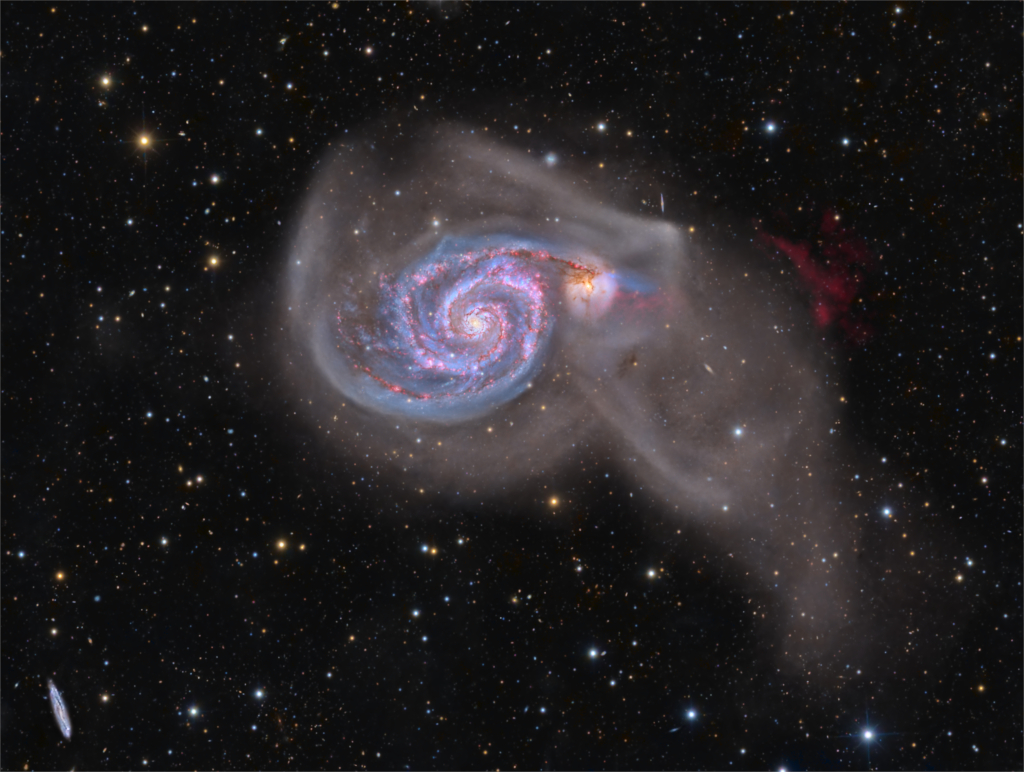Blog
Hezekiah Leroy Gordon Smith (August 14, 1909 – September 25, 1967), better known as Stuff Smith, was an American jazz violinist. He is well known for the song “If You’re a Viper” (the original title was “You’se a Viper”).
Smith was, along with Stéphane Grappelli, Michel Warlop, Svend Asmussen, Ray Nance and Joe Venuti, one of jazz music’s preeminent violinists of the swing era.
He was born in Portsmouth, Ohio, United States in 1909, and studied violin with his father. Smith cited Louis Armstrong as his primary influence and inspiration to play jazz, and like Armstrong, was a vocalist as well as instrumentalist. In the 1920s, he played in Texas as a member of Alphonse Trent‘s band. After moving to New York City he performed regularly with his sextet at the Onyx Club starting in 1935, and also with Coleman Hawkins, Charlie Parker, Dizzy Gillespie, and later, Sun Ra.
more...
Sombrero Galaxy, one of the largest galaxies in the nearby Virgo Cluster of Galaxies. The dark band ofdust that obscures the mid-section of the Sombrero Galaxy in optical light actually glows brightly in infrared light. The featured image, digitally sharpened, shows the infrared glow, recently recorded by the orbiting Spitzer Space Telescope, superposed in false-color on an existing image taken by NASA’s Hubble Space Telescope in visible light. The Sombrero Galaxy, also known as M104, spans about 50,000 light years across and lies 28 million light years away. M104 can be seen with a small telescope in the direction of the constellation Virgo.

Frank “Son” Seals (August 13, 1942 – December 20, 2004) was an American electric blues guitarist and singer.
In 2009, Seals was inducted into the Blues Hall of Fame.
Seals was born in Osceola, Arkansas, where his father, Jim “Son” Seals, owned a small juke joint, called the Dipsy Doodle Club. He began performing professionally by the age of 13, first as a drummer with Robert Nighthawk and later as a guitarist. At age 16, he began to play at the T-99, a local upper-echelon club,with his brother-in-law Walter “Little Walter” Jefferson. He played there with prominent blues musicians, including Albert King, Rufus Thomas, Bobby Bland, Junior Parker, and Rosco Gordon. Their varying styles contributed to the development of Seals’s own playing techniques. While playing at the T-99, he was also introduced to country–western music by Jimmy Grubbs, who occasionally asked Seals to play the drums or guitar with his group. At the age of 19, Seals formed his own band, Son Seals and the Upsetters, to fill in at the Rebel Club, in Osceola. The band members were Johnny Moore (“Old Man Horse”) on piano; Alvin Goodberry on drums, guitar, bass, or piano; Little Bob Robinson on vocals; and Walter Lee “Skinny Dynamo” Harris on piano. Shortly thereafter, a man from Little Rock, Arkansas, came to find “Little Walter” for a gig at his club, but when Walter turned it down the offer went to Seals.
more...Sir George Albert Shearing, OBE (13 August 1919 – 14 February 2011) was a British jazz pianist who for many years led a popular jazz group that recorded for Discovery Records, MGM Records and Capitol Records. Shearing was the composer of over 300 titles, including the jazz standards “Lullaby of Birdland” and “Conception“, and had multiple albums on the Billboard charts during the 1950s, 1960s, 1980s and 1990s. He died of heart failure in New York City, at the age of 91.
more...Anna Mae Winburn (née Darden; August 13, 1913 – September 30, 1999) was an influential Americanvocalist and jazz bandleader who flourished beginning in the mid-1930s. An African American, she is best known for having directed the International Sweethearts of Rhythm, an all-female big band that was perhaps one of the few – and one of the most – racially integrated dance-bands of the swing era.
Her first known publicized performance was singing with the studio band of Radio WOWO, Fort Wayne. She worked at various clubs in Indiana, including the Chateau Lido in Indianapolis (where she appeared under the pseudonym Anita Door)
more...“Big Chief” Russell Moore (August 13, 1912 – December 15, 1983) was an American jazz trombonist.Moore, a Pima tribe member, grew up on a Native American reservation before moving to Chicago and then Los Angeles where he learned to play various instruments, eventually settling on trombone. Throughout his career, Moore worked with an array of artists including Frank Sinatra, Lionel Hampton, Alberta Hunter and Pee Wee Russell as well as recording under his own name. He is best remembered for his work as a member of Louis Armstrong’s band.
Moore was born in Gila Crossing, Arizona inside the Gila River Indian Community reservation in 1912 and belonged to the Pima tribe. He was one of five children born to mother Amy Bending Moore and father José Newton Moore. Musical performances were important to community life on the reservation particularly due to the inaccessibility of record players and radios.
more...A crowded field of galaxies fills this image from the James Webb Space Telescope, alongside a few bright stars crowned with Webb’s signature six-pointed diffraction spikes. The large spiral galaxy at the base of this image is accompanied by a menagerie of smaller, more distant galaxies, which range from fully fledged spirals to mere bright smudges. Named LEDA 2046648, it is situated a little more than a billion light-years from Earth, in the constellation Hercules.

Percy Mayfield (August 12, 1920 – August 11, 1984) was an American rhythm and blues singer with a smooth vocal style. He was also a songwriter, known for the songs “Please Send Me Someone to Love” and “Hit the Road Jack“, the latter being a song first recorded by Ray Charles.
Mayfield was born in Minden, Louisiana, the seat of Webster Parish, in the northwestern part of the state. As a youth, he had a talent for poetry, which led him to songwriting and singing. He began his performing career in Texas and then moved to Los Angeles in 1942, but without success as a singer until 1947, when a small record label, Swing Time Records, signed him to record his song “Two Years of Torture,” with a band that included the saxophonist Maxwell Davis, the guitarist Chuck Norris, and the pianist Willard McDaniel. The record sold steadily over the next few years, prompting Art Rupe to sign Mayfield to his label, Specialty Records, in 1950.
more...Alvis Edgar “Buck” Owens Jr. (August 12, 1929 – March 25, 2006) was an American musician, singer, songwriter, and band leader. He was the lead singer for Buck Owens and the Buckaroos, which had 21 No. 1 hits on the Billboard country music chart. He pioneered what came to be called the Bakersfield sound, named in honor of Bakersfield, California, Owens’s adopted home and the city from which he drew inspiration for what he preferred to call “American music”.
While the Buckaroos originally featured a fiddle and retained pedal steel guitar into the 1970s, their sound on records and onstage was always more stripped-down and elemental. The band’s signature style was based on simple story lines, infectious choruses, a twangy electric guitar, an insistent rhythm supplied by a prominent drum track, and high, two-part vocal harmonies featuring Owens and his guitarist Don Rich.
From 1969 to 1986, Owens co-hosted the popular CBS television variety show Hee Haw with Roy Clark(syndicated beginning in 1971). According to Owens’ son Buddy Alan, the accidental 1974 death of Don Rich, his closest friend, devastated him for years and impacted his creative efforts until he mounted a comeback in the late 1980s.
Owens is a member of both the Country Music Hall of Fame and Nashville Songwriters Hall of Fame.
Owens was born on a farm in Sherman, Texas, United States, to Alvis Edgar Owens Sr. and Maicie Azel (née Ellington) Owens.
In the biography About Buck., Rich Kienzle writes: “‘Buck’ was a donkey on the Owens farm.” “When Alvis Jr. was three or four years old, he walked into the house and announced that his name also was “Buck.” That was fine with the family, and the boy’s name became “Buck” from then on.” He attended public school for grades 1–3 in Garland, Texas.
Owens’ family moved to Mesa, Arizona, in 1937 during the Dust Bowl and Great Depression.
more...Patrick Bruce Metheny (/məˈθiːni/ mə-THEE-nee; born August 12, 1954) is an American jazz guitarist and composer.
He was the leader of the Pat Metheny Group (1977–2010) and continues to work in various small-combo, duet, and solo settings, as well as other side projects. His style incorporates elements of progressive and contemporary jazz, latin jazz, and jazz fusion. He has three gold albums and 20 Grammy Awards, and is the only person to have won Grammys in 10 categories. His older brother is jazz flugelhornist Mike Metheny.
Metheny was born in Lee’s Summit, Missouri. His father Dave played trumpet, his mother Lois sang, and his maternal grandfather Delmar was a professional trumpeter. Metheny’s first instrument was trumpet, which he was taught by his brother, Mike. Pat’s brother, father, and grandfather played trios together at home. His parents were fans of Glenn Miller and swing music. They took Pat to concerts to hear Clark Terry and Doc Severinsen, but they had little respect for guitar. Pat’s interest in guitar increased around 1964 when he saw the Beatles perform on TV. For his 12th birthday, his parents allowed him to buy a guitar, which was a Gibson ES-140 3/4.
more...Performing with the Temple Israel Erev Shabbat Service with Cantor Rachel Stock Spilker . Featuring Jayson Rodovsky, Jeff Bailey, Ernest Bisong, Pete Whitman and mick laBriola
more...
An intriguing pair of interacting galaxies, M51 is the 51st entry in Charles Messier’s famous catalog. Perhaps the original spiral nebula, the large galaxy with whirlpool-like spiral structure seen nearly face-on is also cataloged as NGC 5194. Its spiral arms and dust lanes sweep in front of a companion galaxy (right), NGC 5195. Some 31 million light-years distant, within the boundaries of the well-trained constellation Canes Venatici, M51 looks faint and fuzzy to the eye in direct telescopic views. But this remarkably deep image shows off stunning details of the galaxy pair’s striking colors and extensive tidal debris. A collaboration of astro-imagers using telescopes on planet Earth combined over 10 days of exposure time to create this definitive galaxy portrait of M51. The image includes 118 hours of narrowband data that also reveals a vast glowing cloud of reddish ionized hydrogen gas discovered in the M51 system.

Thornetta Davis (born August 11, 1963) is an American Detroit blues and rhythm and blues singer. She has opened for Bonnie Raitt, Gladys Knight, and Etta James, and sang backing vocals on Bob Seger‘s 1991 album, The Fire Inside. She also worked with Kid Rock and Alberta Adams, and has released three solo albums. Davis was born in Detroit, Michigan, United States.
After entering a local talent contest at the age of 15, Davis went on to join the group Jas which disbanded in 1983 and then she, and another former member of Jas, and two of her high school friends formed Chanteuse, a vocal group covering old R&B hits.
more...More Posts
- World Music with Obo Addy
- Daily Roots with Bob Marley
- The Cosmos with Fleming 1
- Ernest Ranglin Day
- Billy Drummond Day
- World Music with Lela Tataraidze
- Daily Roots with the Skatalites
- The Cosmos with NGC 6872 & IC 4970
- Paul McCartney Day
- William Hooker Day
- Rudy Rutherford Day
- World Fusion with Manika Kaur
- Daily Roots with the Congos
- Happy Fathers Day 2018
- The Cosmos with RCW 108
- Chuck Rainey Day
- Sing Miller Day
- World Music with Corvus Corax
- Daily Roots with ITSJAHMIEL
- The Cosmos with NGC 3372